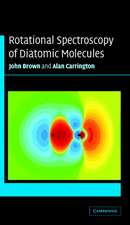Band Structure Engineering in Semiconductor Microstructures: NATO Science Series B:, cartea 189
Editat de R.A. Abram, M. Jarosen Limba Engleză Paperback – 8 iul 2012
Din seria NATO Science Series B:
- 5%
 Preț: 375.70 lei
Preț: 375.70 lei - 5%
 Preț: 369.29 lei
Preț: 369.29 lei - 5%
 Preț: 720.84 lei
Preț: 720.84 lei - 18%
 Preț: 1406.03 lei
Preț: 1406.03 lei - 5%
 Preț: 373.33 lei
Preț: 373.33 lei - 5%
 Preț: 723.78 lei
Preț: 723.78 lei -
 Preț: 391.79 lei
Preț: 391.79 lei - 5%
 Preț: 1445.00 lei
Preț: 1445.00 lei - 5%
 Preț: 380.61 lei
Preț: 380.61 lei - 5%
 Preț: 1103.75 lei
Preț: 1103.75 lei - 5%
 Preț: 711.72 lei
Preț: 711.72 lei - 5%
 Preț: 1414.08 lei
Preț: 1414.08 lei - 18%
 Preț: 957.44 lei
Preț: 957.44 lei - 5%
 Preț: 723.21 lei
Preț: 723.21 lei - 5%
 Preț: 727.44 lei
Preț: 727.44 lei - 5%
 Preț: 1117.46 lei
Preț: 1117.46 lei - 5%
 Preț: 1429.80 lei
Preț: 1429.80 lei - 5%
 Preț: 366.56 lei
Preț: 366.56 lei - 5%
 Preț: 1116.21 lei
Preț: 1116.21 lei - 5%
 Preț: 1106.33 lei
Preț: 1106.33 lei - 5%
 Preț: 1107.77 lei
Preț: 1107.77 lei - 5%
 Preț: 1098.48 lei
Preț: 1098.48 lei - 5%
 Preț: 715.71 lei
Preț: 715.71 lei - 5%
 Preț: 1428.71 lei
Preț: 1428.71 lei - 5%
 Preț: 2004.54 lei
Preț: 2004.54 lei - 5%
 Preț: 724.70 lei
Preț: 724.70 lei - 5%
 Preț: 1438.38 lei
Preț: 1438.38 lei - 5%
 Preț: 1109.23 lei
Preț: 1109.23 lei - 5%
 Preț: 1414.64 lei
Preț: 1414.64 lei - 5%
 Preț: 1291.01 lei
Preț: 1291.01 lei - 5%
 Preț: 1029.50 lei
Preț: 1029.50 lei - 5%
 Preț: 388.12 lei
Preț: 388.12 lei - 5%
 Preț: 1104.48 lei
Preț: 1104.48 lei -
 Preț: 383.93 lei
Preț: 383.93 lei - 5%
 Preț: 718.46 lei
Preț: 718.46 lei - 5%
 Preț: 1113.63 lei
Preț: 1113.63 lei - 5%
 Preț: 369.45 lei
Preț: 369.45 lei - 5%
 Preț: 1108.72 lei
Preț: 1108.72 lei - 5%
 Preț: 1107.77 lei
Preț: 1107.77 lei - 5%
 Preț: 1297.99 lei
Preț: 1297.99 lei - 5%
 Preț: 1123.87 lei
Preț: 1123.87 lei - 5%
 Preț: 718.65 lei
Preț: 718.65 lei - 5%
 Preț: 1954.62 lei
Preț: 1954.62 lei - 5%
 Preț: 721.40 lei
Preț: 721.40 lei
Preț: 400.10 lei
Nou
Puncte Express: 600
Preț estimativ în valută:
76.56€ • 80.14$ • 63.72£
76.56€ • 80.14$ • 63.72£
Carte tipărită la comandă
Livrare economică 31 martie-14 aprilie
Preluare comenzi: 021 569.72.76
Specificații
ISBN-13: 9781475707724
ISBN-10: 147570772X
Pagini: 404
Ilustrații: 400 p. 54 illus.
Dimensiuni: 178 x 254 x 21 mm
Greutate: 0.7 kg
Ediția:Softcover reprint of the original 1st ed. 1989
Editura: Springer Us
Colecția Springer
Seria NATO Science Series B:
Locul publicării:New York, NY, United States
ISBN-10: 147570772X
Pagini: 404
Ilustrații: 400 p. 54 illus.
Dimensiuni: 178 x 254 x 21 mm
Greutate: 0.7 kg
Ediția:Softcover reprint of the original 1st ed. 1989
Editura: Springer Us
Colecția Springer
Seria NATO Science Series B:
Locul publicării:New York, NY, United States
Public țintă
ResearchCuprins
Electronic Structure, Band Offsets and Stability.- Comments on “Can band offsets be modified controllably?”.- The pressure dependent band offset in a type II superlattice, a test for band line-up theories.- Electronic properties of semiconductor interfaces: the control of interface barriers.- Polar/polar, covalent/covalent and covalent/polar semiconductor superlattices.- Band offsets at semiconductor heterojunctions: bulk or interface properties?.- The physics of Hg-based heterostructures.- Valence band discontinuities in HgTe-CdTe-ZnTe heterojunction systems.- Exact envelope function equations for microstructures and the particle in a box model.- A method for calculating electronic structure of semiconductor superlattices: perturbation.- The effects of ordering in ternary semiconductor alloys: electronic and structural properties.- Ab-initio molecular dynamics studies of microclusters.- Transport Properties.- Quantum interference in semiconductor devices.- A review of developments in resonant tunnelling.- Observation of ballistic holes.- Quantum transport theory of resonant tunnelling devices.- Hot electron effects in microstructures.- Models for scattering and vertical transport in microstructures and superlattices.- Electron beam source molecular beam epitaxy of AlxGa1?x As graded band gap device structures.- Future trends in quantum semiconductor devices.- Optical Properties.- Novel optical properties of InGaAs-InP quantum wells.- Time resolved spectroscopy of GaAs/AlGaAs quantum well structures.- Recombination mechanisms in a type II GaAs/AlGaAs superlattice.- Interface recombination in GaAs-GaA1As quantum wells.- The interface as a design tool for modelling of optical and electronic properties of quantum well devices.- Characterization and design ofsemiconductor lasers using strain.- Photoreflectance and photoluminescence of strained InxGa1?x As/GaAs single quantum wells.- Excitons in quantum well structures.- Fourier determination of the hole wavefunctions in p-type modulation doped quantum wells by resonant Raman scattering.- Optical properties of superlattices.- Ab-initio calculated optical properties of [001] (GaAs)n — (A1As)n superlattices.- Effect of a parallel magnetic field on the hole levels in semiconductor superlattices.- Profit from heterostructure engineering.- Participants.














